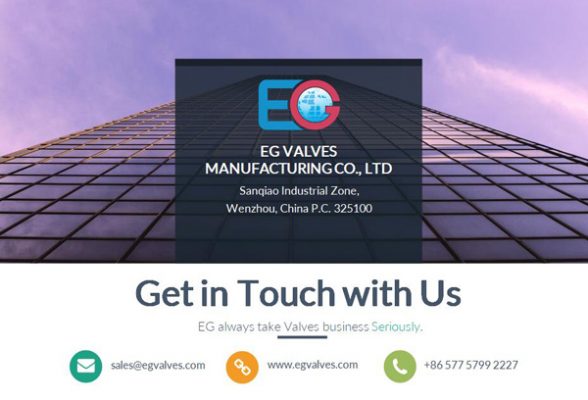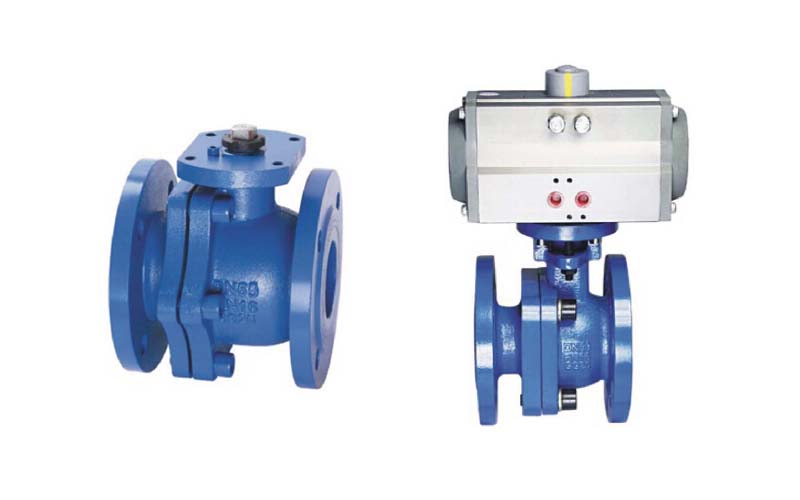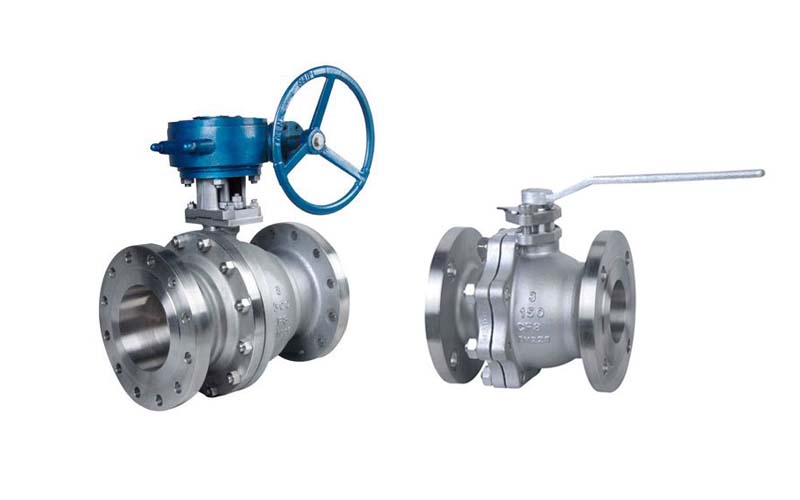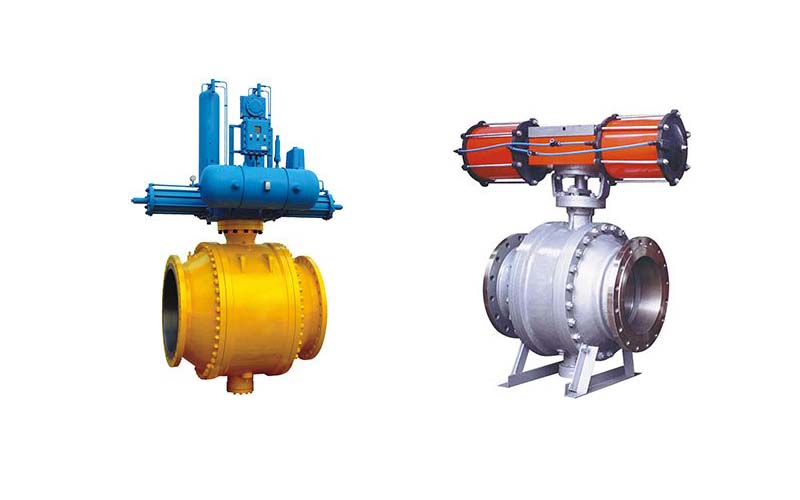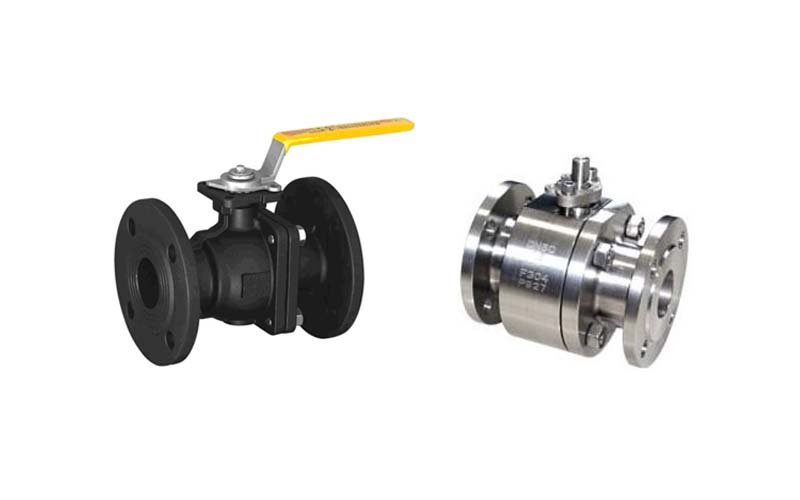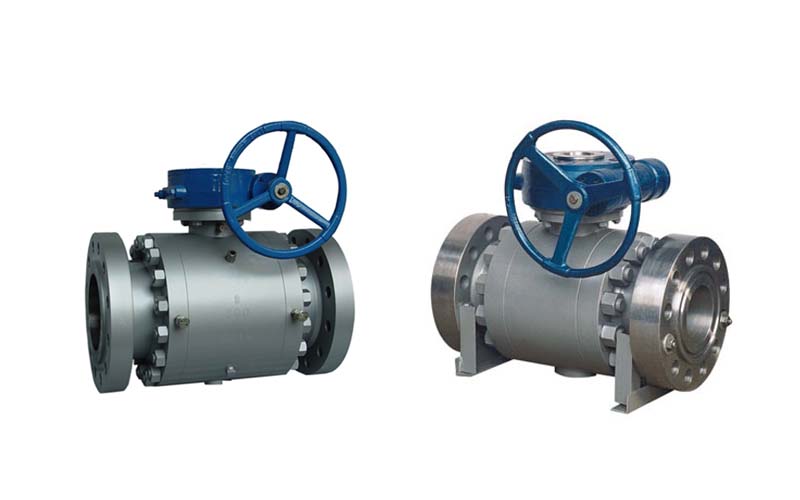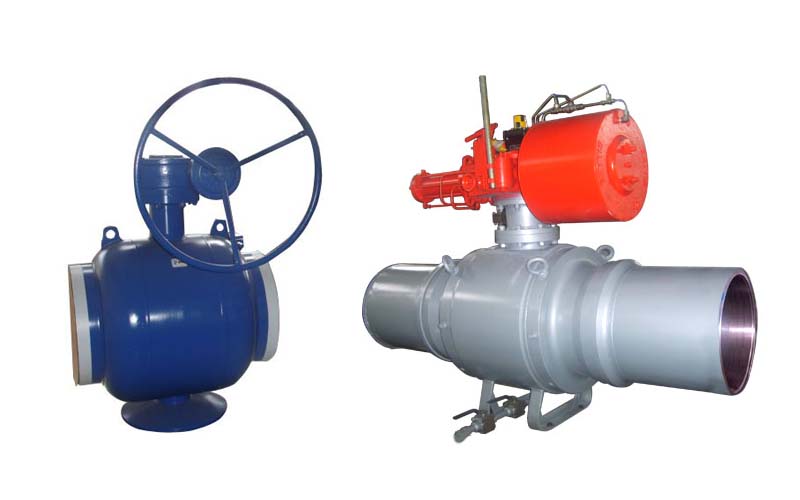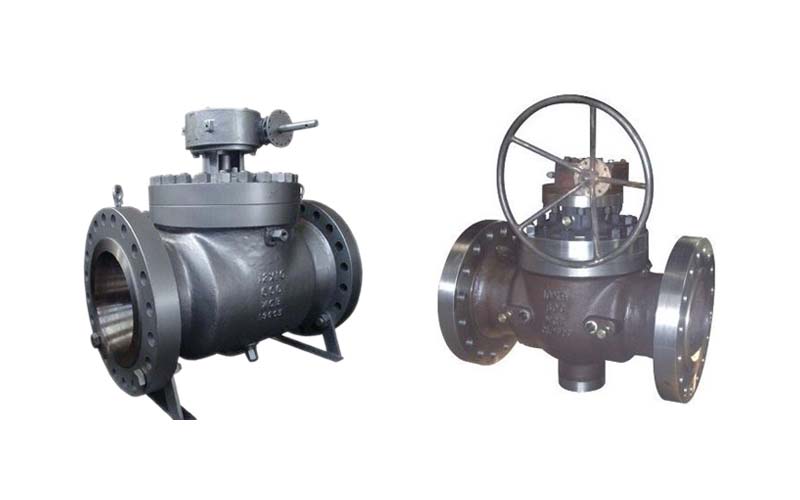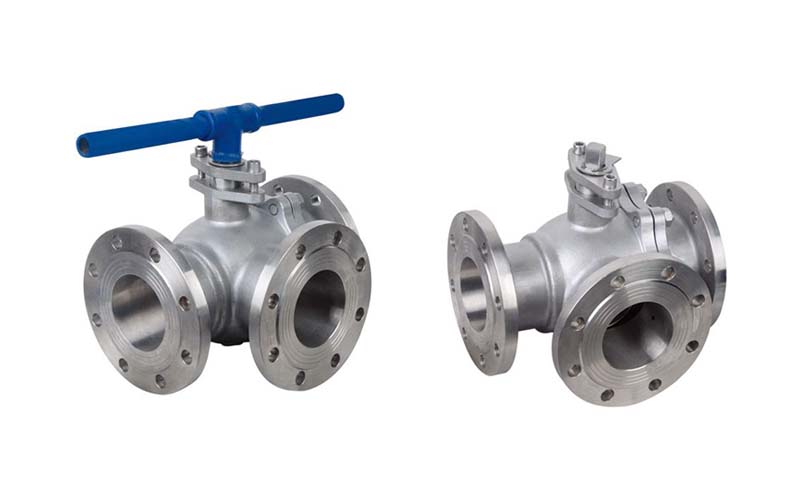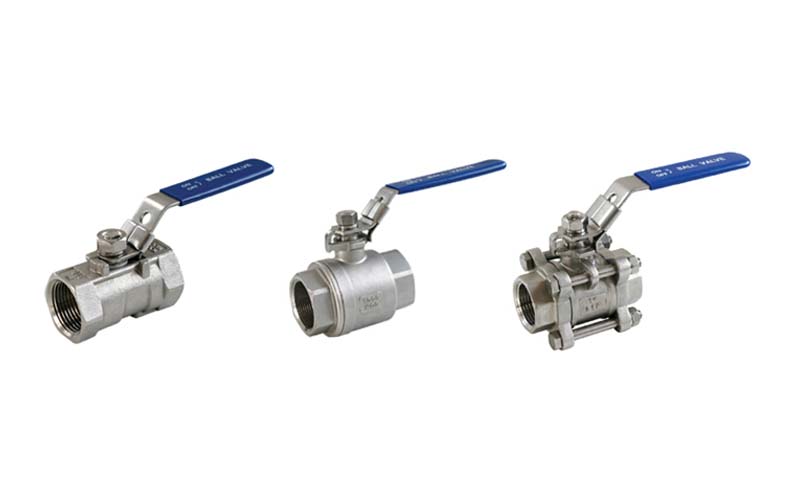Ball Valve China
EG Valves Supply Best Ball Valve China including Cast Iron Ball Valve, Cast Steel Ball Valve, Forged Steel Ball Valve, Threaded Ball Valves, etc.
This ball valve guide article written by our EG Valves technical department may be the most detailed guide on ball valves on the Internet.
The Complete Guide of China Ball Valve
Basics: What are Ball Valves?
A quarter-turn valve, the ball valve china is a pivoting ball with a hollow or solid structure that rotates to control the flow. When it’s open, the hole in the ball aligns with the flow and when closed, the ball is pivoted to 90-degrees.
Besides taking half the time of operation when compared to other valves, china ball valves also prevent leaks. Ball valves are quite durable even with rough use. Such a valve features in industrial applications like gaseous systems, water pumps, slurry, cooling system, water system, fire system, power technology, pipeline-shut off, etcetera.
Introduced in the 1950s as a spherical plug valve, ball valves quickly caught public attention with their use in machine building during the industrial age. It was one of the first valves that were usable in high-temperature and abrasive situations. Made with varieties of ball design and seating elements, ball valves have evolved sporadically since then.
The Ball Valves are available in many types and each type looks different from the other. This ball valve china can be turned by handle/lever, worm gearbox, pneumatic or electrical actuator.
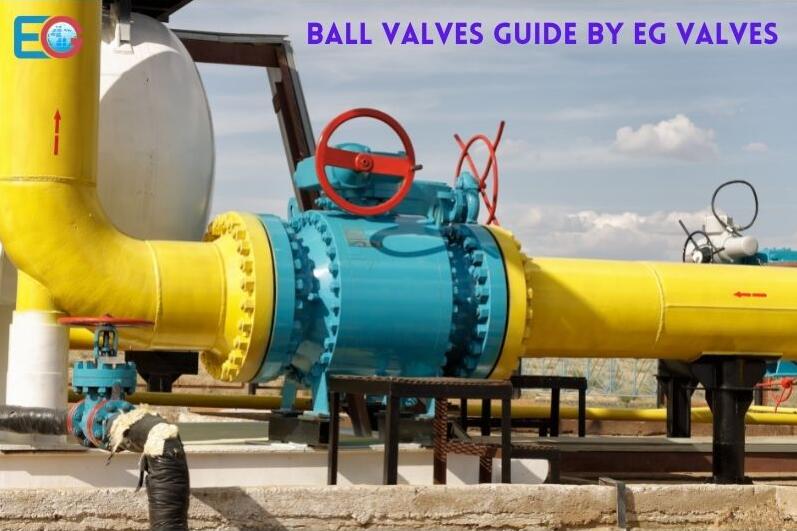
Features of Ball Valves
- Fire Safe Design:
When the PTFE seat is damaged by fire, the valve bodies should get contact with the ball and keep some degree of sealing; the connecting surface of the valve bodies should be made of gaskets with fire safety functions, such as metal spiral wound gaskets; At the valve stem packing position, when the packing is burned, there should be a graphite ring to prevent the medium from leaking out.
- Anti-Blow out Stem Design:
The valve stem should be inserted from the valve body inside to obtain an anti-blow out function. This is also the requirement of the ANSI B16.34 6.5.1.1 section. The valve stem should not rely on a seal retainer (packing, gland, fasteners) to limit its position in the valve. When the valve is under pressure, the stem should not remove from the valve due to the loosening of the seal retainer.
- Anti-Static Design:
The anti-static structure is composed of a small stainless steel ball and a small spring. One group is placed in the hole at the end of the valve stem to maintain contact with the ball; the other group is placed on the cylinder of the valve stem to maintain contact with the valve body. This design can lead the possible static electricity away from the valve body.
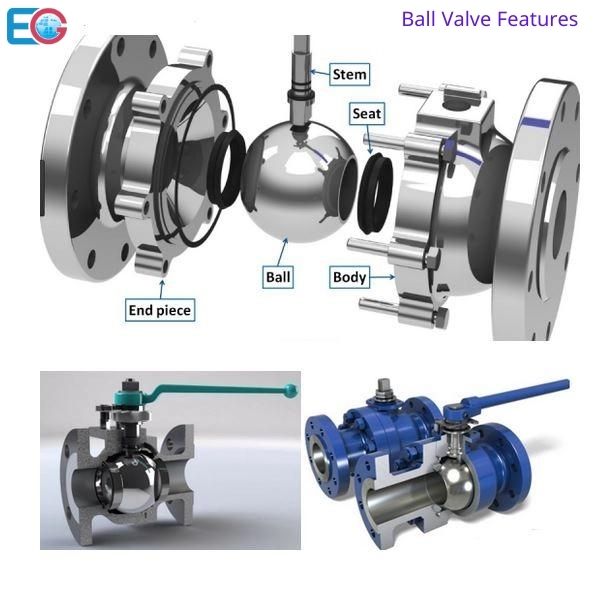
- Sealing:
The ball valve is actually a plug valve with a spherical closure. The valve seat that matches the ball is circular, so the sealing stress on the circumference is the same. - Sizes:
Depending on your requirements, choosing the right ball valve china size is crucial, especially when you have to fit it in the right space. Typically, these are available in sizes ranging from 1/4 to 48 inches.
- Small Resistance:
The fluid resistance of the ball valve of all kinds of valves is the smallest. This is because the cross-sectional area of the valve body passage, the sphere passage, and the connecting pipe are equal when fully opened, and they are connected in a straight line.If the equivalent pipe length is used to express the resistance of the valve, this equivalent length is given in the engineering data manual of the American Gas Processing and Suppliers Association (GPSA) in the hydraulic calculation of the pipe network. The data shows that the resistance coefficient of the stop valve and the check valve is the largest, followed by the plug valve, the gate valve, and the ball valve have the smallest resistance.
| Equivalent pipe length to reflect resistance of the valve. (Unit: Inch) Data from GPSA. | ||||
| Size | Globe Valve | Check Valve | Plug Valve | Ball Valve and Gate Valve |
| 1″ | 55 | 13 | 7 | 1 |
| 2″ | 70 | 17 | 14 | 2 |
| 3″ | 100 | 25 | 21 | 2 |
| 4″ | 130 | 32 | 30 | 3 |
- Capacity:
The flow coefficient (Cv) in the fully open position of the valve is respective to the size and weight of the valve. From the perspective of energy saving and environmental protection, the ball valve is an energy-saving product. For a 2” (DN50) valve, the flow coefficient of the ball valve is compared with other types of valves as shown in the figure below:
| Flow Coefficient of 2 Inches (DN50) Valve | |||||
| Type | Ball Valve | Butterfly Valve | Gate Valve | Plug Valve | Globe Valve |
| Cv value | 490 | 145 | 210 | 70 | 44 |
- The flow coefficient Cv value is the number of U.S. gallons (One gallon =3.78L) per minute that the water at 60°F (16°C) flows through the valve under a pressure difference of 1psi (0.07bar).
Quick-action:Because ball valves are quarter-turn valves that can regulate the flow in half the time than other valves, it’s perfect for emergency shut-off and on functions.
- Position Indicator:
One of the special characteristics of ball valves is the piston indicator that’s fixed atop the ball to determine the direction in which the media flows.
- Over 20 years of experience catering to various industries since 2000.
- EG Valves supply ball valve in Brass, Stainless Steel, Cast Steel, Forged Steel, Our ball valves include Floating type, Trunnion type, Fully-Welded, Top-Entry, Three-Way Ball Valves, and so on.
- EG Valves comply with standards like ANSI, API, DIN, BS, JIS, ISO 9001, OHSAS, and CE/PED, API-6D.
- Customized requests accepted for a variety of ball valves.
- Quick, reliable, flexible shipping options such as FCL, LCL, Air Transport, DHL, UPS, and FedEx.
- Small and medium-sized orders of ball valves are also accepted.
- Customer service team familiar with different languages to help you out.
- Experience in working with Europe, the Middle East, North America, Asia, and Latin America.
- Volume manufacturing guarantees a short lead time for commonly used ball valves.
- Quick response to inquiries and orders.
- Export Standard Packaging with layers of plywood to nullify damages during transit.
“When it comes to the evolution of ball valves, different parts of the valve have been tweaked, upgraded, and modified to create new types that can prove useful for different applications. Let’s look at the complete set of ball valve types available today.”
By the way how the ball is fixed in the ball valve body
The following will explain the two different ways how the ball is fixed inside the valve body.
1. Floating Ball Valve
As shown in the upper part of the left picture, the ball is sandwiched by two valve seats, and the ball can float. Under the action of the medium, the ball is pressed to the sealing ring on the outlet side to close the valve. This kind of structure is simple, single-sided sealing, it can achieve good sealing performance, but the sealing surface bears great pressure, so the opening and closing torque is also large. Floating ball valves are generally used for medium and low-pressure conditions (Under Class 600/PN100), meanwhile, the valve sizes are generally less than 8 Inches (DN200).
| Floating Ball Valve Working Pressure and Temperature Rating | |||||||
| Max Working Pressure / bar | |||||||
| Temp °C | Class 150 | Class 150 | Class 150 | ||||
| WCB | CF8, CF8M | WCB | CF8, CF8M | WCB | CF8, CF8M | ||
| -29 ~ 30 | 20 | 19 | 51 | 50 | 102 | 99 | |
| 93 | 18 | 17 | 47 | 43 | 4 | 86 | |
| 149 | 16 | 15 | 45 | 39 | 3.9 | 77 | |
| 204 | 13 | 13 | 44 | 36 | 3.8 | 71 | |
| 260 | 12 | 12 | 41 | 33 | 3.6 | 66 | |
| Test Pressure | Shell (Liquid) | 1.5 x Max Working Pressure | |||||
| Closure (Liquid) | 1.1 x Max Working Pressure | ||||||
| Low Closure (Air) | 6 bar | ||||||
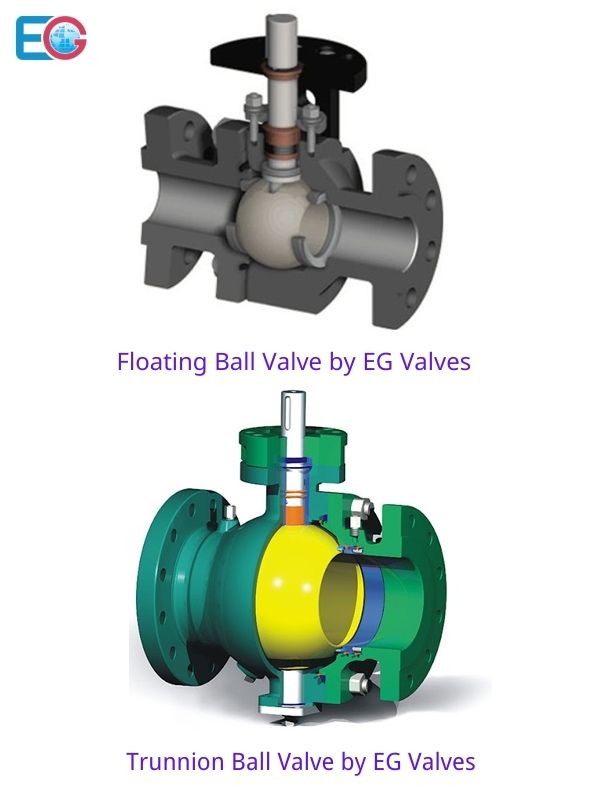
2. Trunnion Mounted Ball Valve
As shown in the lower part of the left picture, the ball is supported and fixed by the upper and lower valve stems, and it can only rotate and cannot move horizontally. To ensure the sealing effect, it must have a floating seat capable of generating thrust, so that the sealing ring is pressed against the surface of the ball. This kind of structure is more complicated, meanwhile, the external dimension is large, and the opening and closing torque are small. The trunnion ball valve is suitable for low, medium and high pressure (Up to Class 2500/PN420) and the valve sizes can range from 2 Inch to 60 Inch (DN50 to DN1500).
By End Connections of Ball Valve
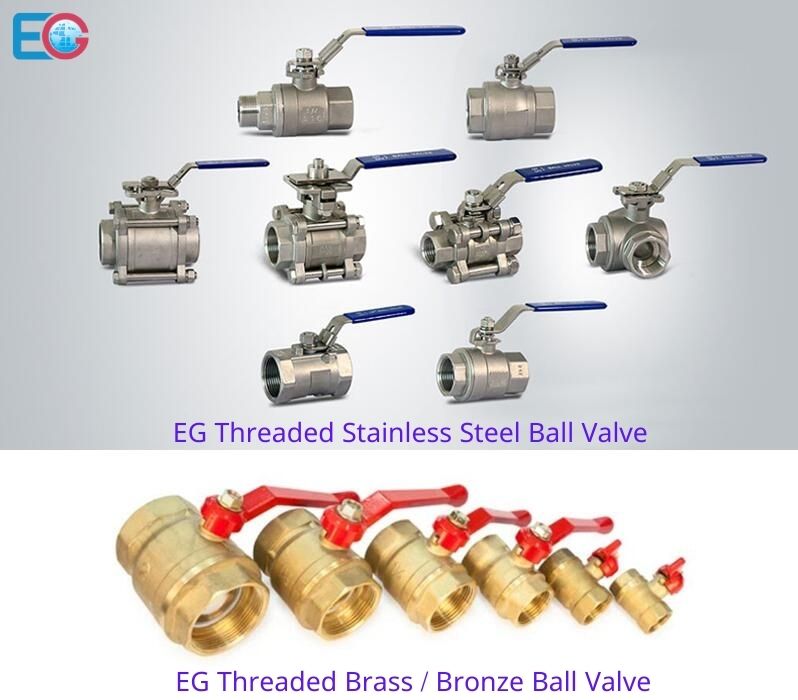
The following will explain different end connections ball valves based on basic specifications.
1. Threaded Ball Valve
The general rule is that smaller-sized ball valves (smaller than 2 inches (DN50) can use threaded connections. Some process systems where fugitive emissions or process leakage is not a problem, (such as water systems) will also use threaded connections in sizes up to 4 inches (DN100).
Threaded ball valves are the most common ball valves in daily life and ordinary working conditions. The most common ones are stainless steel ball valves (body material SS304 or SS316) and brass ball valves, with sizes ranging from DN15 to DN100. Stainless steel threaded ball valves can be divided into one-piece type, two-piece type, and three-piece type according to the structure, while the brass threaded ball valves are mainly two-piece type.
The international mainstream thread standards are BSP, BSPT, NPT, NPTF, UNF, DIN2999, and ISO228. According to EG Valves supply experience, most clients from European countries use BSP threaded valves, and most American countries use NPT threaded, while most German clients use DIN2999 threaded.
2. Flanged Ball Valve
Flanges are commonly required on china ball valves larger than 2 inches (DN50). Flanges are easier to install than threaded connections because the ball valve’s face is matched up with piping and bolted together without any rotation of the pipe or ball valve.
For valve sizes smaller than 24 inches, the ball valve’s flanges are built to the ASME Standard B16.5 (CL150/CL300/CL400/CL600/CL900/CL1500/CL2500) while for valve sizes larger than 26 inches, ball valves flanges are built to the ASME standard B 16.47.
For European countries, ball valves flanges are built to the EN1092-1 or EN1092-2 standards. The pressure ratings are PN2.5/PN6/PN10/PN16/PN25/PN40/PN63/PN100.
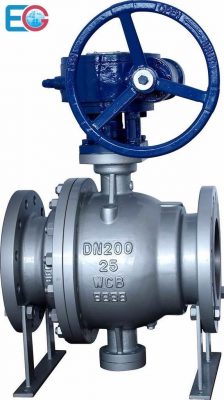
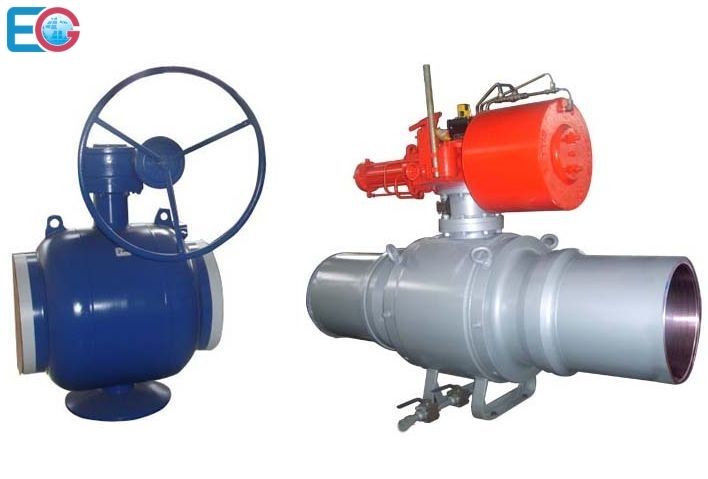
3. Welded Ball Valve (Butt Welded Ball Valve and Socket Welded Ball Valve)
When zero leakage is required – for environmental, safety, sanitary, or efficiency reasons – The piping can be welded to the ball valve, providing one-piece construction. Many users insist that
high-pressure applications – ANSI CL900 (PN160) and higher will require a permanent end connection, especially if they involve high temperatures.
The two most common welded connections are socket-weld and butt-weld connections. The socket-weld connection is specified in high-pressure-high-temperature fluids for ball valve sizes 2 Inches (DN50) and smaller according to ANSI Standard B16.11).
For larger ball valve sizes 3 Inches (DN80) and larger, a butt-weld connection is specified for high-pressure-high-temperature applications. Most butt-weld ends are specified according to ANSI Standard B16.25.
How Can EG Valves Guarantee Quality?
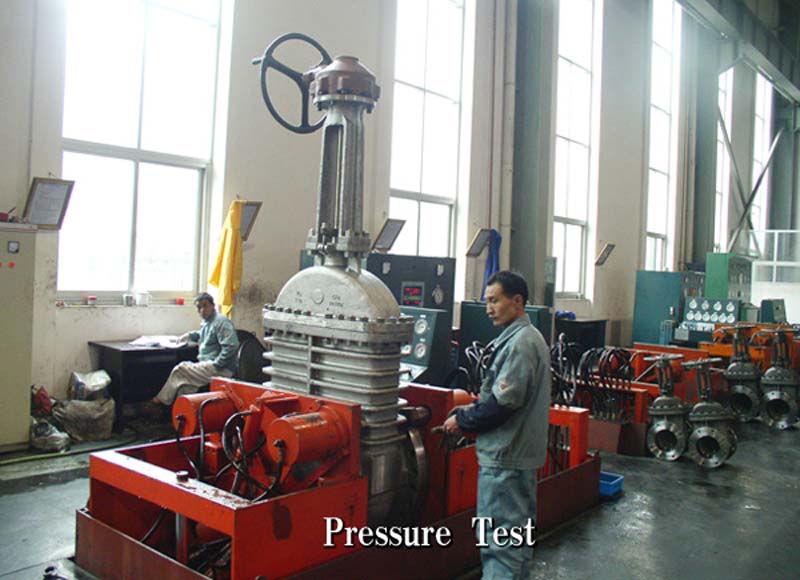

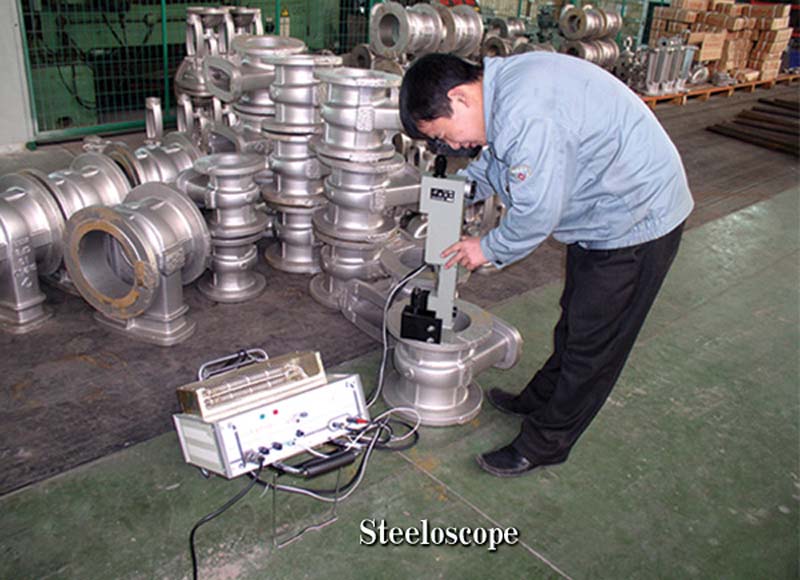
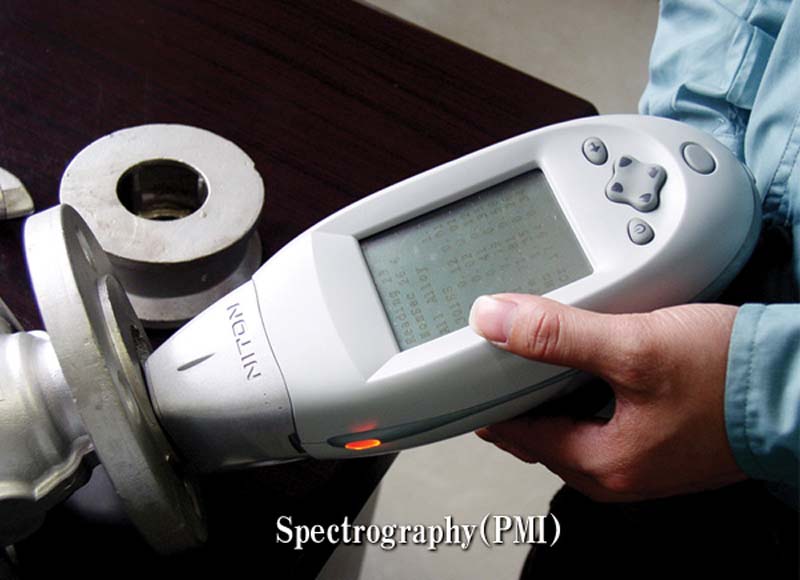

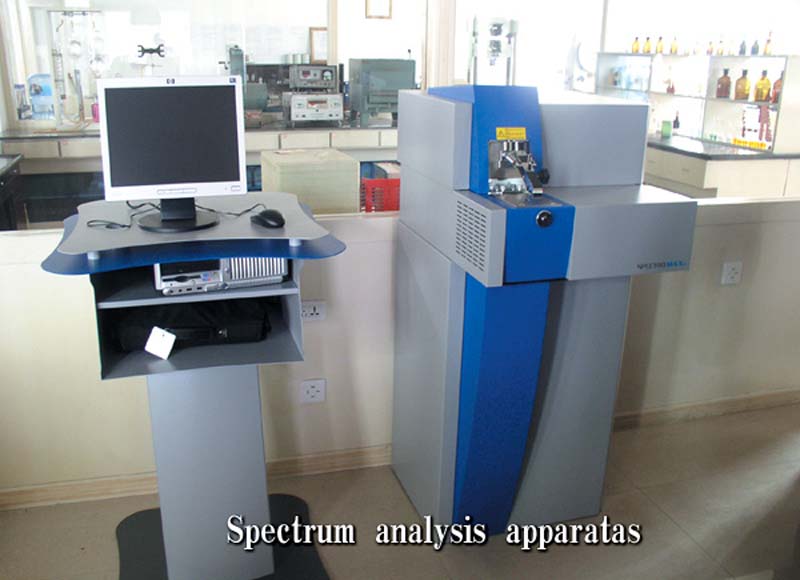
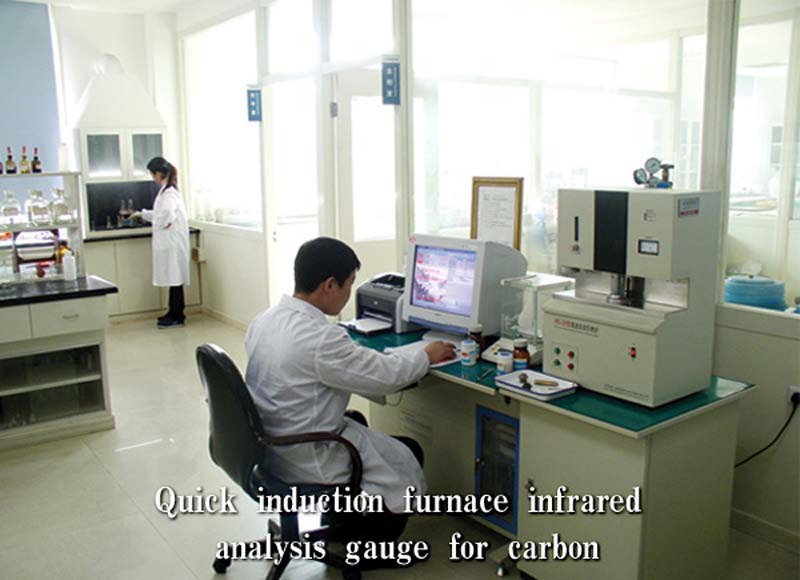
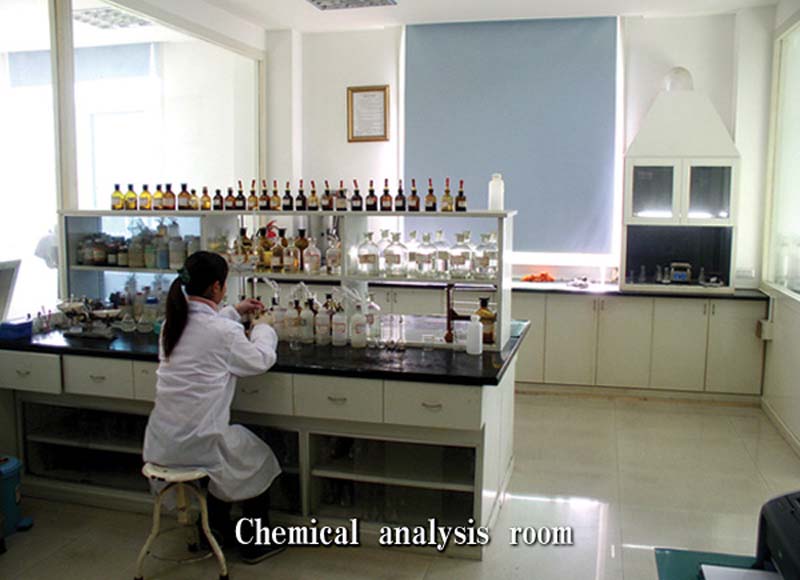
By Ball Valve Inside Constructions
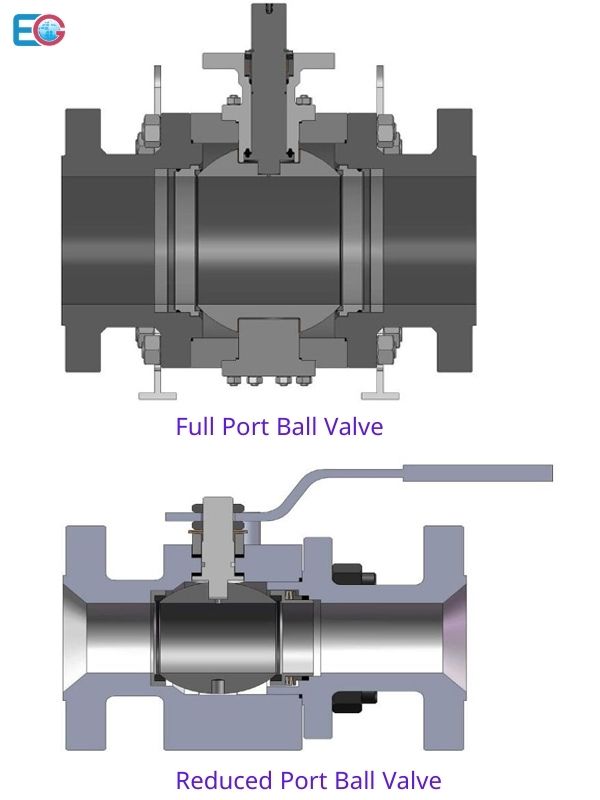
Depending on the different ball valve’s inside constructions. Let’s look at varieties of ball valves based on this criterion.
- Full Port Ball Valve:
Also called the full bore (FB) valve, the full port is made in the same diameter size as the connecting It’s often used for throttling in petrochemical and refining fields for its unrestricted flow of fluid and low friction. Although this type of ball valve inside design is more expensive to manufacture, this kind of full-bore ball valve must be used for the pipeline which needs to be cleaned. (It can allow for the use of a pig valve to scour the inside of the pipeline and to remove any process buildup or scale.
Reduced Port Ball Valve:
Different from the FB valve, the reduced port valve has a smaller diameter (one to two sizes smaller) than the connecting pipe. The flow of liquid is limited in the range of 70% to 80% and this type of valve creates a pressure drop within the pipeline. This type of valve is seen in industries like oil and gas and it’s commonly known as regular port or reduced bore valves. The primary purpose of the reduced-port ball valve is to control the flow through reduced flow or through throttling, which is defined as regulating the closure element to provide varying levels of flow at a certain opening of the valve.
V Port Ball Valve:
The inside ball will be processed into a V-shaped notch. This shape of the alphabet V can achieve accurate regulation of fluid. The construction reduces unnecessary pressure within the valve and it looks akin to 2-way ball valves. It’s great for compressed air systems due to its ability to depressurize. V Port ball valves can also do the work of control valves with a lower drop in pressure due to the consistent flow of media.
- Multiport Ball Valve: (Three Way Ball Valve and Four Way Ball Valve).
Multiport Ball Valve provides greater flexibility in operation. The Three Way Ball Valve has three types of ball passages: L-type, T-type, and Y-type, and its distribution form is similar to that of plug valves. For Four Way Ball Valve, there are two channels and four inlets and outlets on the ball body of the four-way ball valve. The valve body is also made into four inlets and outlets A, B, C, D. Among them, A connects with C, and B connects with D. When the ball rotates 90 degrees, it switches to A connects with B, and C connects with D.
Multiport ball valves are typically used for industries that require excellent mixing processes. Such a ball valve can divert the media to multiple outlets elegantly too. - Hollow Ball Valve:
Composed of a cavity that stretches from an open hole below the valve to the top at the site of insertion of the stem is how the hollow type of ball. It’s economical than the other varieties and is easier to manufacture.
- Solid Ball Valve:
Molded into one solid space, the solid ball is expensive to produce due to the additional material and rounding necessary during construction.
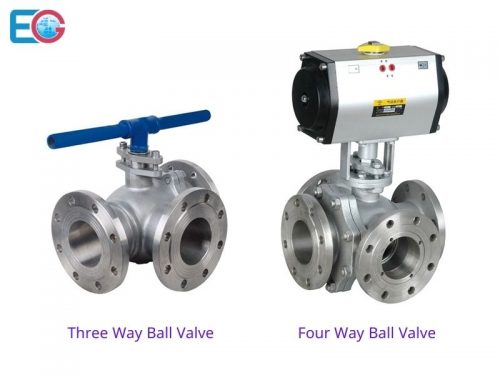
By Ball Valve Assembled Number of Pieces
The housing and assembly of the valve can have significant effects on the ball valve type.
Here are the varieties you need to know about:
- One-Piece Ball Valve:
With sturdy construction, one-piece ball valves are typically reduced bore too. For those who are looking to budget the cost of valves, a one-piece ball valve fits because it’s the cheapest option available. However, such a valve isn’t openable, and hence cleaning and maintenance aren’t viable options. It’s used for small industries without any requirement of upkeep. - Two-Piece Ball Valve:
When two pieces of housing are assembled into one, you get a two-piece valve. It’s easy to repair and maintain, unlike one-piece valves. - Three-Piece Ball Valve:
If three pieces of housing are combined, it’s a three-piece ball valve. This type of valve is also easy to maintain, repair, and clean and the best thing is internal parts are also cleanable without any disengagement from connecting pipes. However, three-piece ball valves are costlier than one-piece and two-piece options.
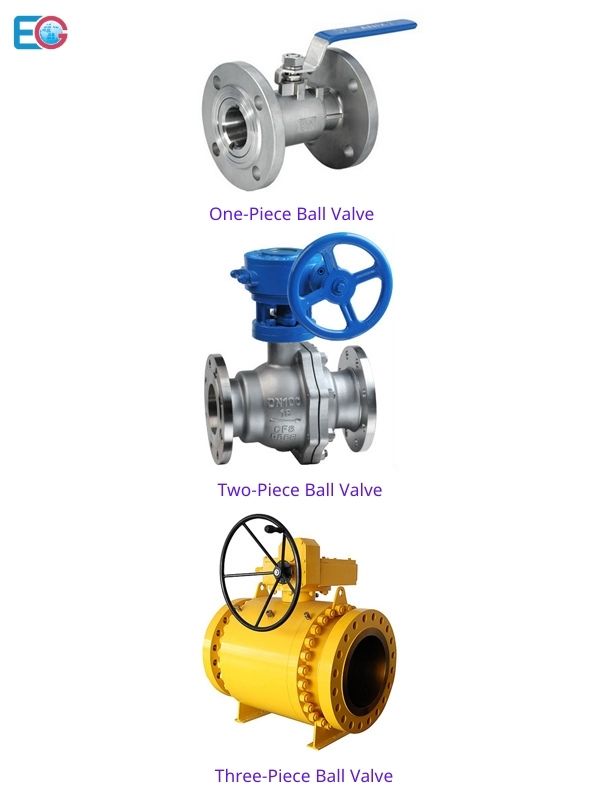
By Ball Valve’s Special Feature and Application
To meet the needs of some special working conditions, some special ball valves have been developed. Now we introduce several special ball valves as follows:
- Pipeline Ball Valve:
A pipeline ball valve is a kind of Trunnion Ball Valve, and it is one of the most important developments of the ball valve. The full name of the Pipeline Ball Valve should be the long-distance pipeline transportation system pipeline ball valve. Pipeline valves include ball valves, gate valves, plug valves, and check valves, which are dedicated valves with special functions that meet the special requirements of long-distance pipeline transportation.
In 1914, the first 9-kilometer-long oil pipeline was built in the central US, which opened the prelude to the industrial development of the pipeline. The cost of using pipelines to transport crude oil is 2/3 of the cost of maritime transportation, oil tanker, and LNG ship transportation. The maximum diameter of the pipeline ball valve is 60 inches (DN1500), and the maximum pressure rating is Class 2500/PN420. It has the characteristics of full diameter and low flow resistance, which is convenient for remote control and automation.
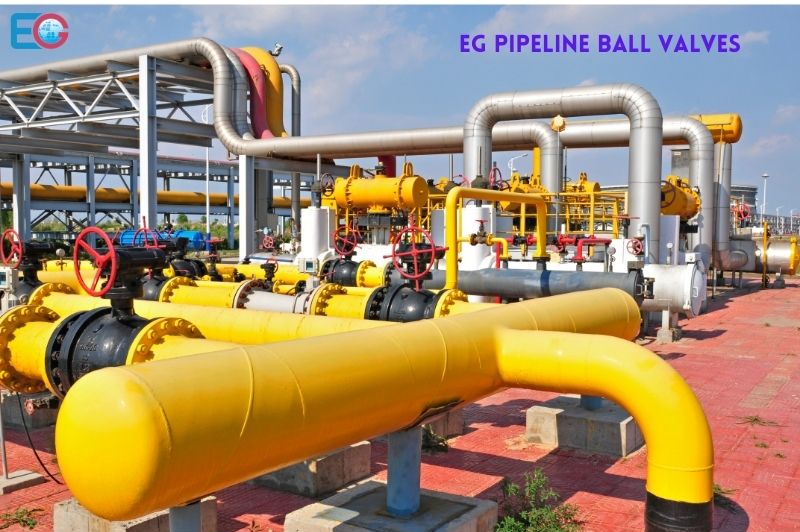
- Fully Welded Ball Valve:
The pipeline ball valve has experienced more than half a century of development. In the 1950s, a company of the United States introduced a pipeline ball valve with a spherical structure and a fully welded forged steel body. Nowadays people call this product Fully Welded Ball Valve. The valve body is fully welded and spherical, composed of four pieces of forgings. The welding is carried out after the product is assembled. The welding process is the last process to form a closed product, which cannot be disassembled or disassembled. The advantage of this structural rationality is to provide reliable sealing during the service life. In addition, the overall valve body provides sufficient strength and rigidity.
If it needs to be buried underground, our Fully Welded Ball Valve can be provided with an extended stem and extended pipe so that the valve can be operated above the ground. The stem extension device includes the extension of the stem, bracket, grease injection valve, and drain valve. The specific extension requirements and length will be customized according to our clients’ working conditions.
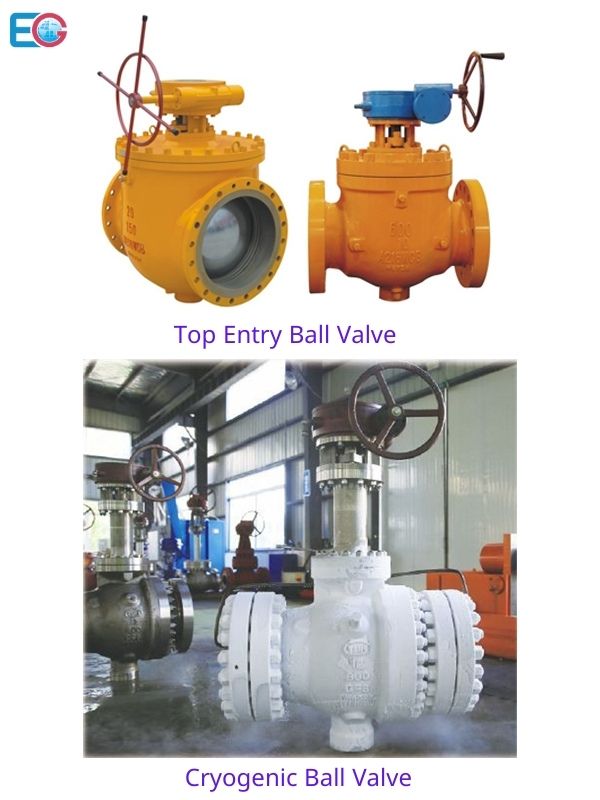
- Top Entry Ball Valve:
In the pipeline industry, some occasions require a Top Entry Ball Valve that can be repaired online. Its structure is shown in the figure. A cast integral valve body is designed with a plastic sliding bearing in the middle to fix the ball on the center of rotation. The drive shaft and The ball transmit torque through a flat body, which mainly needs to be able to move to both sides in the horizontal direction during assembly and online maintenance so that the ball can be taken out from the valve seat or installed when it is in the open position.
- Cryogenic Ball Valve:
Also named Low-Temperature Ball Valve. The cryogenic ball valve is mainly used for cryogenic medium, and it is an indispensable product for modernization and modern industry. Generally speaking, valves whose working temperature between -254 °C (liquid ammonia) and -101 °C (ethylene) are called “Ultra-Low temperature valves”, For example, LNG (liquefied natural gas) ’s temperature is -161.8 °C. While other valves whose working temperatures are between -100 °C and -29 °C are called “low-temperature valves”. Cryogenic ball valves need to use special low-temperature steel or low-temperature alloys.EG Valves team need to choose different valve body/trim materials and internal structures based on the different medium used by clients. (We do need the client to provide us with clear & correct information to supply quality guaranteed valves.)
A notable feature of cryogenic ball valves is that they have an extended valve neck, which is used to protect the packing to ensure the valve stem is sealed. Other parts of the valve must also undergo low-temperature treatment to ensure the stability of the valve’s performance at low temperatures.
- Sanitary Ball Valve:
This kind of ball valve is manufactured for applications that demand clean or hygienic processing. They are widely used in beverage/ dairy/food processing, biopharmaceutical, medical, and personal care cosmetics, etc. This ball valve is called a sanitary ball valve because its fully cavity PTFE seat solves the problem of liquid retention inside the ball valve so that the sanitary ball can limit bacterial activity. Meanwhile, its high-light finish end can prevent contamination from outside sources. And its refined contact surfaces make sure it is aseptic. Sanitary Ball Valve can be made to different end connections including Tri-Clamp, Welding, and Threaded ends.
International demand for sanitary ball valves is rising very fast, especially after the year 2020, which is affected by the epidemic. The reason is quite simple, the pharmaceutical industry has developed rapidly.
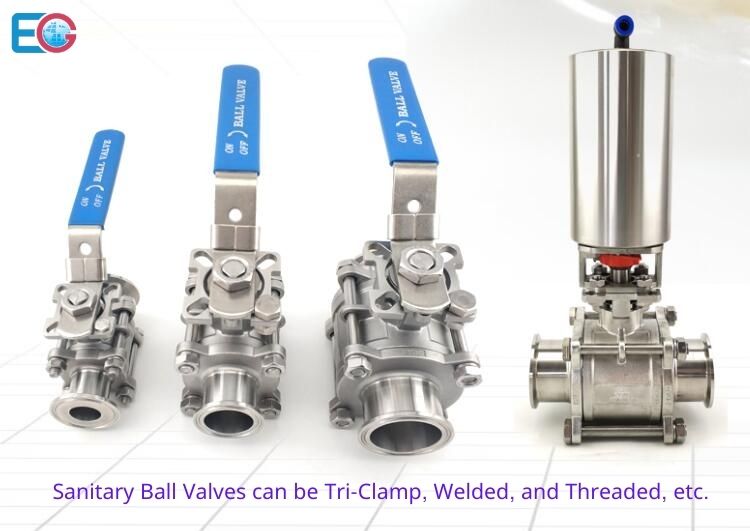
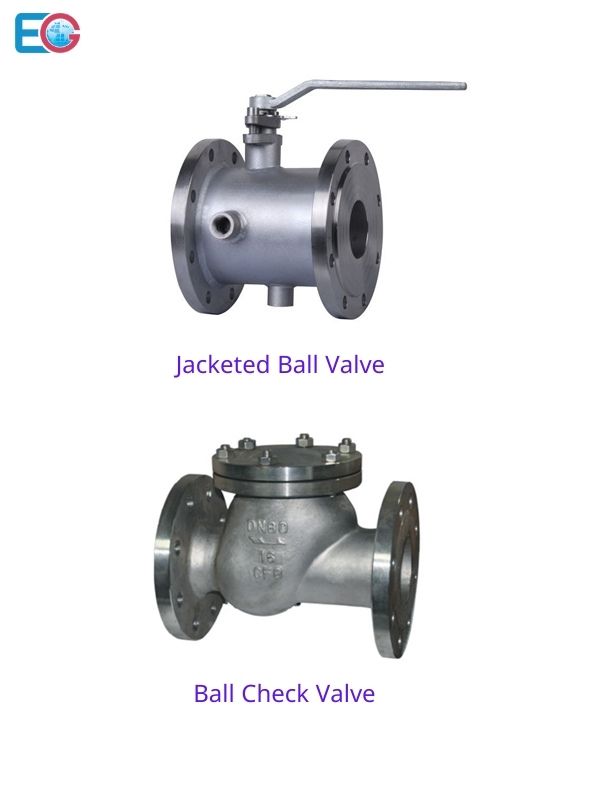
- Jacketed Ball Valve:
Jacketed ball valves are mainly used to transport materials that are easy to crystallize or viscous liquid medium. The principle is to use heating and heat preservation methods to prevent material crystallization and improve fluid flow characteristics.
The insulation jacket of the Jacketed Ball Valve is welded between both ends of the valve. The jacket has a steam inlet and a steam outlet. The pressure and temperature of the steam should be determined by the nature of the flowing medium in the valve.
- Ball Check Valve:
The ball check valve is a multi-purpose design with one valve. It has both the function of isolating the inlet and outlet medium of the ball valve and the function of instantaneously controlling the flow of the valve. As shown in the figure, it is the design of the ball check valve. Its structure is an ordinary floating ball valve, and a swing valve disc is arranged in the passage of the ball. In this way, the ball valve can be closed to isolate the inlet and outlet medium. When the ball valve is opened, it is a check valve, and the medium can only flow in one direction. When the outlet end pressure is higher than the inlet end, the medium is automatically cut off. This valve can replace the functions of two valves and save engineering
- Wafer Type Ball Valve
Wafer type ball valve mainly adopts a one-piece structure and compact structure. According to the length of the face-to-face dimension, it can be divided into two types: ordinary type and thin type. - High Pressure Forged Ball Valve
High pressure forged ball valve is suitable for CL600, CL800, CL900, CL 1500, working temperature -46~180℃ (sealing ring material is RPTFE, MOLON, PEEK, etc.) or -46~425℃ (sealing ring material is metal) Suitable mediums include water and steam, oil, nitric acid, acetic acid,
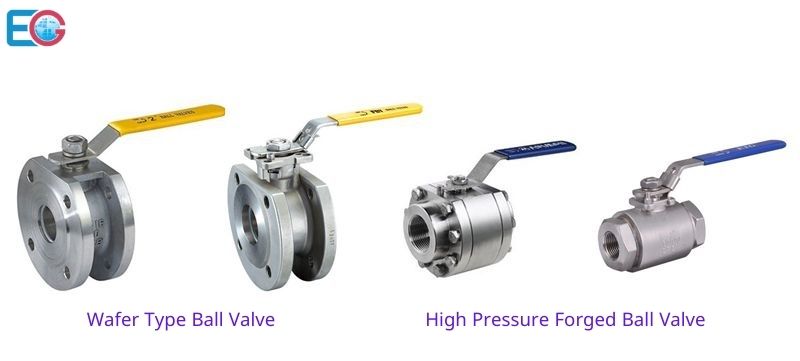
Based on the seat material of ball valves, there are two options to select from as shown below.
- Soft Seated Ball Valve:
The invention of PTFE has played a great role in the development of ball valves. Without it, I am afraid that there will be no great development of ball valves. But as time progresses, PTFE has many advantages while gradually revealing some shortcomings, such as “cold flow” and “thermal expansion”, as well as pressure-temperature usage level restrictions. Therefore, it is necessary to discuss the development of sealing materials and their scope of application. Sealing materials can be divided into two categories in terms of a large range. One is the soft polymer material PTFE and other polymers, which can ensure reliable sealing; the second is metal, which can only guarantee a low leakage rate in general, (we will discuss later), here only introduces the soft sealing materials of polymer materials.
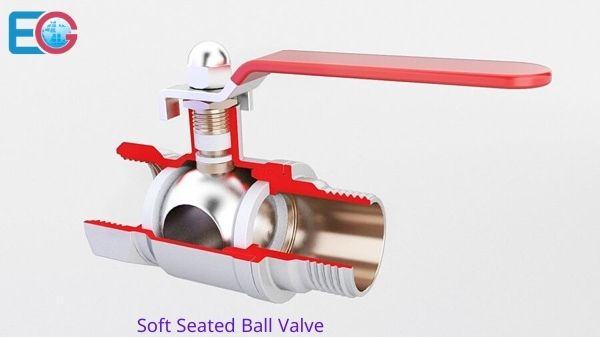
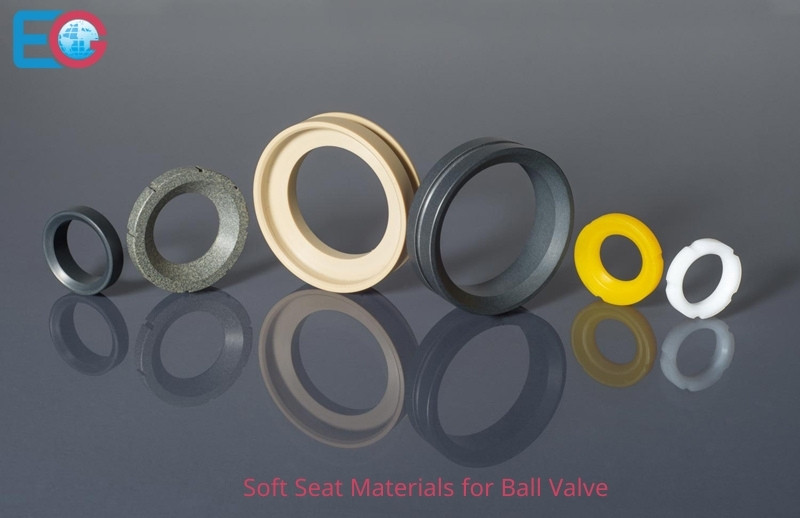
Main soft seat materials:
① Polytetrafluoroethylene (PTFE)
Pure PTFE is the most basic sealing material for ball valves. It not only has a certain temperature range from low temperature to 350F (177℃) but also has excellent chemical resistance and self-lubricating properties. Its scope of application is wider.
② Reinforced PTFE (RPTFE)
It has all the characteristics of pure PTFE, and its temperature range is increased, and it can be expanded to 400F (205°C) for ball valves below 4 inches. The filling material is generally glass fiber, carbon, graphite, etc.
③ Metal reinforced PTFE
The filling material is copper powder or other metal powder. This sealing material is designed to be specially used in occasions of strong pressure fluctuations and is mainly used in the discharging system of the digester of the pulp mill.
④ Special Nylon
The special nylon seal seat is suitable for higher pressure occasions that PTFE cannot adapt. According to the type and size of the valve, it can reach up to 4500 psi, but its chemical resistance is low. It is widely used in high-pressure liquids, air, and other gases (not Including oxygen) systems.
⑤ Polyoxymethylene
It has a hardness, strength, and rigidity similar to that of metal. It has good self-lubricity under a wide temperature and humidity, low friction coefficient, high elasticity, and good corrosion resistance to most solvents. Its disadvantage is that it is sensitive to strong acids and strong oxidants. The applicable temperature is -40~116℃, the tensile strength is 69Mpa, the shear strength is 65MPa, and the bending strength is 97MPa. The molding method is injection molding. The maximum pressure can reach 2400lbf/in², covering a pressure rating of 600LB.
⑥PEEK
PEEK is an aromatic polymer containing ketone groups. It has good high-temperature performance, resistance to organic and inorganic chemicals, and long-term resistance to hot water decomposition. It can maintain its strength and toughness in the range of 200~260℃. It can be processed by injection molding, extrusion, and compression molding, and can be effectively used in steam systems. For 1/2 to 2 inches ball valves, the saturated steam under the pressure of 475lbf/in² can achieve reliable sealing. On other occasions, it can be used at a temperature of 550F (280°C) and has good chemical stability.
The life of the sealing performance is affected by the following factors: pressure, temperature, pressure fluctuation degree, medium flow rate, valve operating speed, and opening and closing frequency. In actual use, these factors are cross-effects. Therefore, to obtain long-term service life and severe working conditions, it is necessary to develop sealing materials.
⑦UHMW (Ultra High Molecular Weight Polyethylene)
This is a high-molecular polyethylene material. PTFE cannot be used in high-radioactive situations, but UHMW can be used in radioactive environments. This material can also be used in situations where PTFE is prohibited, such as in the tobacco industry.
⑧Polyimide
Polyimide is a high-performance plastic with high heat resistance, dimensional stability, flame retardancy, radiation resistance, and UV resistance. The tensile strength is 95MPa, the bending strength is 170MPa, and the friction factor is 0.15~0.2. It can be used for higher temperatures (to 250℃).
Processing method: molding or injection molding. It can be used for hot gases, oils, and thermal media, and can be used for high-pound valves. But it should be noted that it is not suitable for water and steam media
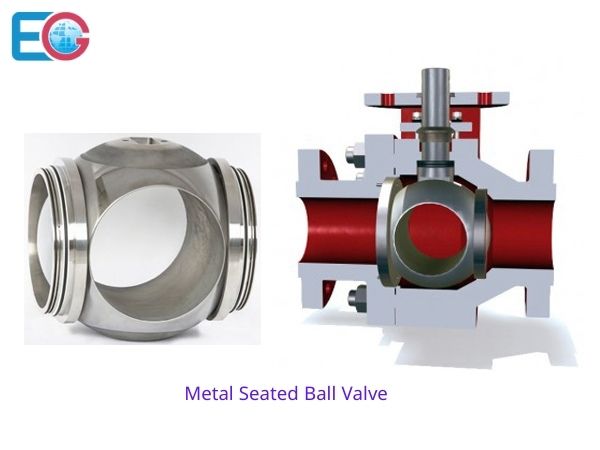
- Metal Seated Ball Valve:
Although soft-seated ball valves cover many application fields, some application conditions make the valve service in a critical state, or even fail to serve well, and must be replaced by metal-sealed ball valves. According to our research, the first metal-seated ball valve appeared in the 1960s.
There are many advantages to using metal seats. The first point is to expand the temperature range, which can be from -196 to 900°C. The second point is that the service medium can contain solid particles, gas-solid, or liquid-solid two-phase flow. The third point is that it is suitable for corrosion and wear conditions. The fourth point is to expand the scope of use of pressure ratings. Metal-seated ball valves can reach up to Class 2500 pressure rating.
Structural features: The surface of the ball adopts supersonic spraying of Tungsten Carbide / Chromic Carbide OR thermal spraying of nickel-based nanopowder by carbonyl method so that the surface hardness of the ball can reach more than 60HRC, and the whole valve seat is made of hard materials or hard-facing hard alloys. It can withstand wear well during the opening and closing process, and withstand the erosion of the medium. Since its packing is made of flexible graphite and the gasket is made of flexible graphite stainless steel spiral wound gaskets, it can be used in high-temperature conditions.
By Ball Valve Body Material
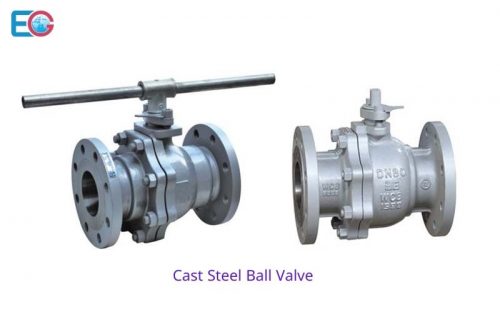

We EG Valves provide our clients with various ball valves made of different body materials as below:
- Cast Iron Ball Valve
We supply cast iron ball valves and ductile iron ball valves. The working pressure of the ductile iron ball valve is greater than that of the cast iron ball valve.Our ball and stem are made of stainless steel. The biggest advantage of cast iron ball valves is their low price.
- Cast Steel Ball Valve
Castings Steel ball valves are cheaper than Forged Steel ball valves because the process is easier and the high volume manufacturing run by us EG Valves.
Carbon Steel (WCA, WCB, WCC) is probably the most common cast steel material. Overall, they are the ideal material for noncorrosive fluids. Our cast steel ball valves are widely used for saturated steam and superheated steam, high and low-temperature oil, liquefied gas, compressed air, water, natural gas, etc.
Meanwhile, their working temperature is between -29 and 425°C.
Chrome-moly steel (WC6, WC9) ball valve can withstand even higher temperatures up to 600°C.
Forged steel Ball Valve
Forged steel ball valves are required for special materials and/or higher-pressure ratings (such as ANSI Class 1500/PN250, Class2500/PN400) when compared to above mentioned cast steel ball valves. As per our supply experiences, the most used forged steel materials are A105, F11, and F22, etc.
- Stainless Steel Ball Valve
Stainless Steel is very corrosion resistant, extremely strong, and is commonly specified for high-temperature Its cost is somewhat higher than carbon steel, although less than other steel alloys.① Stainless Steel 304 Ball Valve is generally suitable for mediums such as steam, non-corrosive gas, petroleum, and related products whose working temperature is between -196~650℃; and corrosive medium whose working temperature is between -30~200℃. Our SS304/CF8 Ball Valve has excellent atmospheric resistance, can withstand nitric acid and other oxidizing media, and is also resistant to corrosion by alkali, water, salt, organic acids, and other organic compounds. However, it is not resistant to the corrosion of non-oxidizing acids such as sulfuric acid and hydrochloric acid, nor is it resistant to non-drying hydrogen chloride, oxidizing chlorides, and organic acids such as oxalic acid and lactic acid.
For your better understanding of SS304, please note its casted grade is ASTM A351 CF8 / AISI 304/ DIN 1.4308, while the forged grade is ASTM A182 F304 / DIN 1.4301.
EG Valves also supply 304L/CF3 cast stainless steel ball valves as well, and their casted grade is ASTM A351 CF3 / AISI304L / DIN 1.4306. Meanwhile, our forged stainless steel 304L body’s grade is ASTM A182 F304L / DIN 1.4452.
② The Stainless Steel 316 Ball Valve body containing 2%~3% molybdenum based on 304 has better corrosion resistance than 304 series stainless steel. Its corrosion resistance in non-oxidizing acid, hot organic acid, and chloride. It is better than chromium-nickel stainless steel and has better pitting corrosion resistance. Now more clients select our SS316 Ball Valve due to the consistently fine quality & reasonable prices.
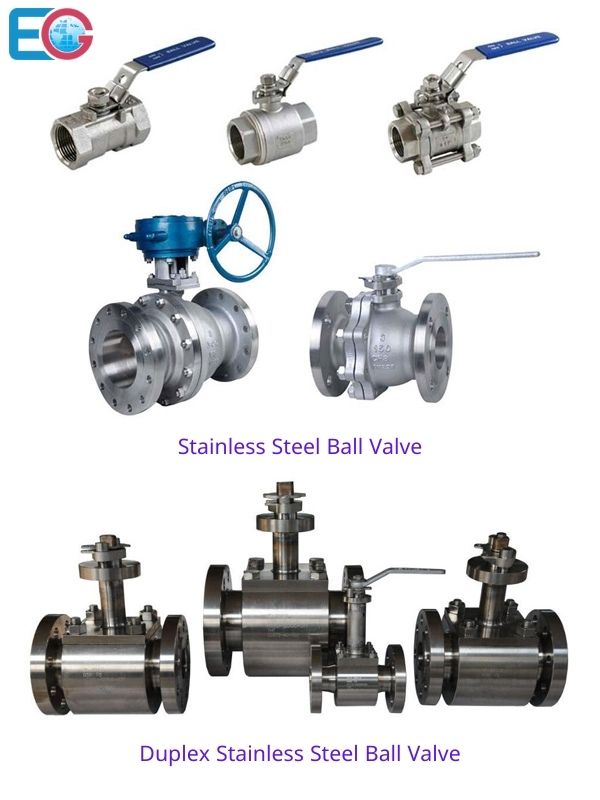
- For your better understanding of SS316, please note its casted grade is ASTM A351 CF8M / AISI 316/ DIN 1.4408, while the forged grade is ASTM A182 F316 / DIN 1.4401.
EG Valves also supply 316L/CF3M cast stainless steel ball valves as well, and their casted grade is ASTM A351 CF3M / AISI316L / DIN 1.4404. Meanwhile, our forged stainless steel 316L body’s grade is ASTM A182 F316L / DIN 1.4435.
③ 321 and 347 series stainless steel containing titanium or niobium have strong resistance to intergranular corrosion. If an application has this special requirement, then you should select our SS321 or SS347 Ball Valves.
④ The 904L series stainless steel containing high chromium and high nickel has higher corrosion resistance than ordinary stainless steel. It can be used to treat sulfuric acid, phosphoric acid, mixed acid, sulfurous acid, organic acid, alkali, salt solution, hydrogen sulfide, etc., and can even be used for certain high-temperature occasions under these concentrations. But it is not resistant to the corrosion of concentrated or hot hydrochloric acid and wet fluorine, chlorine, bromine, iodine, aqua regia, etc. Although this demand is not too much, we also would like to introduce our 904L ball valves for your information
Duplex stainless steels valves are usually selected for their high mechanical properties and good to very high corrosion resistance (particularly to stress corrosion cracking).
However duplex stainless steel valves are more expensive.
Please find commonly used duplex stainless steel grades are as below matching table:
| ASTM F SERIES | UNS SERIES | DIN STANDARD |
| F51 | UNS S31803 | 1.4462 |
| F52 | UNS S32900 | 1.446 |
| F53 / 2507 | UNS S32750 | 1.441 |
| F55 / ZERON 100 | UNS S32760 | 1.4501 |
| F60 / 2205 | UNS S32205 | 1.4462 |
| F61 / FERRALIUM 255 | UNS S32505 | 1.4507 |
| F44 | UNS S31254 | SMO254 |
If you would like to know more knowledge regarding this duplex stainless steel material, you can check https://en.wikipedia.org/wiki/Duplex_stainless_steel
Brass Ball Valve
Brass is mainly an alloy composed of copper and zinc. Brass can be added with different amounts of zinc or other elements. The increase in zinc content provides the material with better strength and ductility. The brass ball valve is widely used because of its good mechanical properties and processability.
The brass ball valve is suitable for water, oil, gas, steam, etc. The brass ball valve is also the most common and most used ball valve.
Bronze Ball Valve
Bronze is generally more expensive than brass, partly because the process required to make bronze is more complicated. Bronze refers to a copper-tin alloy. The physical strength, structural stability, and corrosion resistance of bronze make it particularly suitable for industrial production. The diameter of industrial bronze ball valves can reach DN100. Bronze ball valves are not as common as brass ball valves.
The bronze ball valves can be used for pure oxygen service and in marine applications.
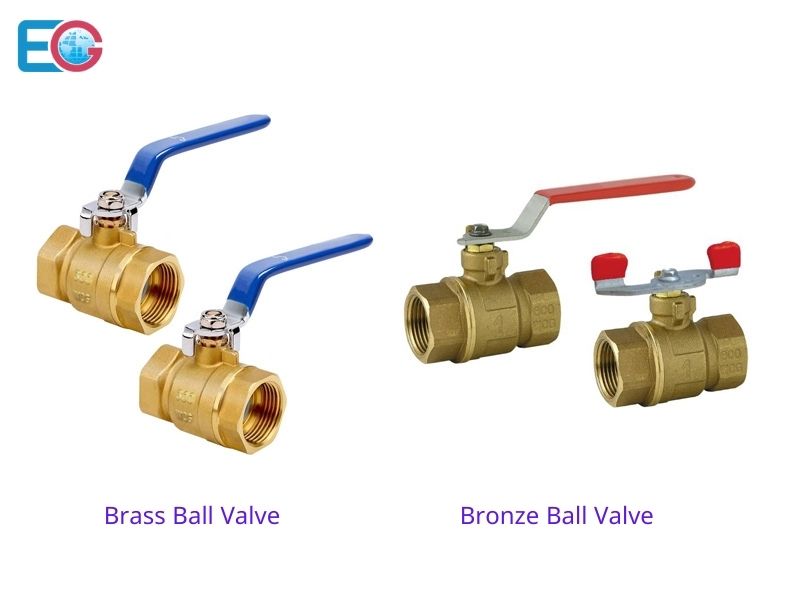
Plastic Ball Valve and Ceramic Ball Valve
Both of these materials are non-metallic. The biggest feature of non-metal material valves is strong corrosion resistance, even with advantages that metal material valves cannot have. Generally suitable for corrosive media with nominal pressure ≤ PN16 and working temperature not exceeding 60℃.
Non-toxic plastic valves are also suitable for the water supply industry. The most common plastic ball valves are made of polyvinyl chloride (PVC), chlorinated polyvinyl chloride (CPVC), polypropylene (PP), and polyvinylidene fluoride (PVDF).
FAQ (Frequently Asked Questions About Ball Valves)
1. What are the main parts of Ball Valves?
Different types of china ball valve manufacturers made valves differently. Take a look at the anatomy and main components of ball valves as below.
- Body:
The frame of a ball valve is its body and it helps to protect the valve from external damages. The body of a ball valve is connected to the pipes and it may be assembled in one, two, three, or even five pieces.
- Ball:
The reason why the ball valve is named. It is a metal hollow or solid ball typically placed in the middle of the valve and called the ball. Upon turning, it can regulate the flow of fluid within the system.
- Packing:
Flexible seals that fit around the stem/shaft and prevent the media traveling through the valve from escaping externally.China Ball Valve Manufacturers
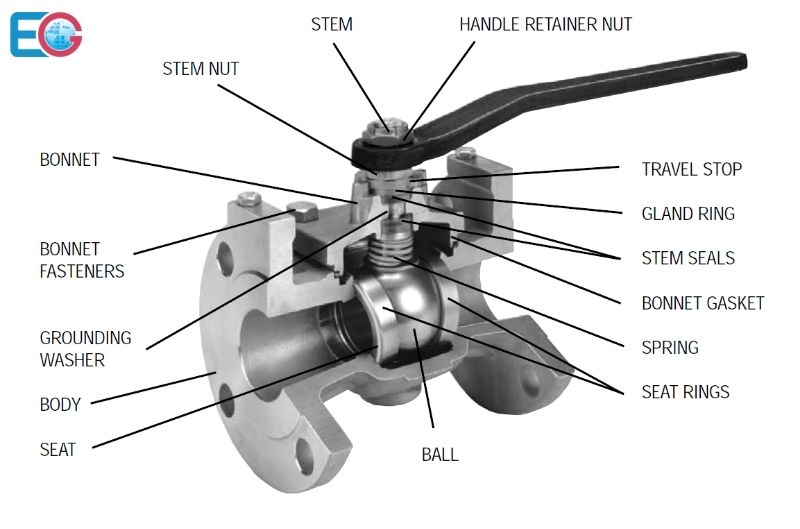
- Bonnet:
The part of the valve body that houses the stem and packing. Bonnet provides a third layer of protection from leakage of media for this type of valve. - Stem:
The shaft of a ball valve that links with the ball and subsequently to the handle or lever, worm gearbox, the pneumatic or electric actuator of the ball valve is referred to as the stem. This is where the turning force of the actuator is passed onto the inside of the ball valve.
- Seat:
This is where the ball of the ball valve is seated inside. It protects the system from leakage when the valve shuts off or opens. In the above previous article, we have explained that some ball valves are soft seated ball valves, and some others are metal seated ball valves.
- Actuator Unit:
Present outside the body of ball valves, the actuator can open or shut off the ball valve externally. Opening/closing the ball valve can by manual handle/lever or worm gearbox. In some cases, people use a pneumatic or electric actuator to open/close the ball valve.
The handler/lever, worm gearbox, and pneumatic/electric actuator are different types of actuator units.
2. How does a ball valve work?
Ball valves manufacturer use a hollow or solid ball that’s pierced in the middle that helps to control the flow of media through it. Ball Valve is a kind of shut-off valve using a rotary ball (have a bore inside) to control the flow of a liquid or gas. By rotating the ball a quarter-turn (90 degrees) around its axis, the medium can flow through or is blocked.
The ball valve opens when the hole is parallel to the flow of fluid and closed upon reaching 90-degrees with the valve handle. When the ball valve is open partly for a long time and when the pressure drop is high throughout the ball, the soft seating of the ball valve will allow the flow of media around the circumference of the ball to open and lock it at such an angle.
When the ball traverses to the seats in a wiping type of movement, ball valves can maintain fluids that contain suspended solids and fibers easily. That being said, harsh solids can cause damage to seats as well as the surface of the ball. In case there are rough, tough, and lengthy fibers too, they can wrap around the ball.
Based on the total ports within a ball valve, the flow could be unidirectional, bidirectional, or even multi-directional. While it’s a great option to reduce the time for opening and shutting the valve, there are disadvantages too. Ball valves can trap residual media in the center of the cavity while it’s closed. We’ll learn about the demerits of ball valves in the coming sections.
For now, take a look at this video to help you understand how ball valves work.
3. How are ball valves manufactured and inspected at EG Valves?
We learned all the many different types of china ball valves above. Depending on individual types, the construction of a ball valve differs. Moreover, from sourcing to production, ball valve manufacturing is a sophisticated process due to the different materials and goals involved.
While we can’t vouch for other manufacturers, here’s what happens at EG Valves when you place an order for our ball valve.
1. Various specifications of ball valve raw materials purchased by EG company.
2. Use a spectrum analyzer to test the materials of the raw materials, and print out the test report of the raw materials for backup.
3. Use a cutting machine to cut raw materials.
4. The inspector inspects the cutting diameter and length of the raw material.
5. The forging workshop performs forging and forming of raw materials.
6. The inspector conducts various dimension inspections on the semi-finished products.
7. Workers cut off the rough edges.
8. Sandblasting workers perform surface sandblasting treatment on semi-finished products.
9. Inspectors conduct surface treatment inspection after sandblasting.
10. Workers perform rough machining.
11. Ball Valve body sealing thread processing—Workers perform self-inspection during machining. Inspectors perform post-processing inspections on products after machining.
12. Ball Valve body connection thread or flange machining.
13. Middle holes processing.
14. The inspector conducts a complete inspection.
15. Qualified semi-finished products are sent to the semi-finished products warehouse.
16. Semi-finished products are electroplated.
17. Semi-finished product electroplating surface treatment inspection.
18. Inspection of various accessories (ball, stem, sealed valve seat).
19. Product assembly in the assembly workshop—the assembly line inspectors inspect the Ball valves.
20. After assembly, all ball valves need to undergo pressure testing, and passed ball valves are sent to the drying workshop to dry & clean.
21. The final assembly workshop conducts finished ball valve packaging-the packaging line inspectors inspect the ball valve’s tightness, appearance, and torque. The unqualified products will be singled out and then rearranged.
22. Qualified ball valves are packaged well in export standard plywood cases and sent to the finished product warehouse.
23. The inspection records will be classified and stored in our computer for checking at any time.
25. Qualified ball valves are sent to domestic and overseas clients through sea freight or air freight
4. What are the advantages of Ball Valves over other Valves?
You’re almost ready to order ball valves for your industrial process. But what are the actual merits of using this type of valve? Take a look below to know more:
- Low-Pressure drop:
Ball valves exhibit low-pressure drops, which translates to a low drop in the flow of media. That’s why it’s called a high recovery valve and is often recommended in high-pressure settings. With a low drop in pressure and higher shut-offs, ball valves can also lead to a reduction in operating temperature.
- Withstanding high configurations:
Many ball valves are manufactured to resist very high temperatures, velocities, and pressure of the fluid that flows through it. In short, these valves can regulate and maintain a huge volume of pressure as well as temperatures and velocities.
- Preventing leaks:
As a ball valve has a bubble-tight connection with the rest of the system, it sits tightly where it’s fitted. This is good news because such a setup can reduce leakage and increase the reliability of the fluid flow.
- Quick Operation:
Because ball valves are quarter-turn valves, they take half the time of other valves to complete operation. The response time is merely a quarter of a turn and that makes ball valves easy to open and close. This is especially useful where emergency closure and opening are mandatory such as in an emergency shutdown situation.
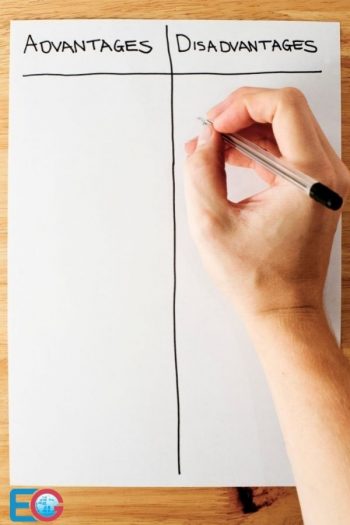
- Better than gate valves:
With a lighter body and smaller size, ball valves are the easiest type of valves to repair, maintain, assemble, and disassemble. Their flexibility makes it a better alternative too. - Variety:
As there are several types of ball valves available today, you can select from multiple variations and designs that fit your scope of requirements. It can accommodate a score of industries too.
5. What are the disadvantages of Ball Valves?
Yes, ball valves also have an expiry rate like most types of machinery. Moreover, if you don’t use it properly, it can damage prematurely too. Before you finalize ball valves for your industrial works, it’s important to level up with its list of disadvantages too.
● When a ball valve is fully open, it can create turbulence that can lead to resistance within the flow of media.
● You will experience problems in case you’re using it for sustained throttling because ball valves aren’t good for that. Moreover, partial exposure of the seat in such a case can lead to erosion that arises from high velocity.
● Ball valves may get damaged if there’s a high velocity of flow with sustained throttling.
● When compared to most valves, ball valves are typically costlier to produce. Ball’s processing and grinding are relatively expensive.
● The wear and tear of ball valves can be immense when you use the wrong kind of media to regulate within it. When you do so, ball valves can jam and trap suspended solids that can damage it faster than usual.
● The best use of ball valves is to shut off and open. Please don’t use it for regulating the full flow of media. (Unless you are using a V-shaped ball valve.)
● Owing to its quick opening and closure, ball valves may lead to the dangerous case of hydraulic shock or water hammer that happens due to undue pressure surges.
6. What are the uses and applications of ball valves?
From shutting off and controlling the flow of media to pressure control, ball valves are used for a large number of things. They are a part and parcel of many large industries and we’ll get acquainted with each below so that you can decide whether it’s the right choice for your needs.
- Oil and Gas:
Welded ball valves are used for gas transmission as well as the processing of air. Ball valves with welded bodies are great for regulating natural gases like oxygen, hydrogen peroxide, etcetera. It’s used for gas distribution to measuring, metering, and pressure regulation. Petrochemical industries as well as those related to gas feed pipelines, crude oil plants, field gas plants, LNG plants, and industrial gas processing. Gate valves and butterfly valves are also used in the oil and gas industry. Stainless steel valves find their use in refining, brewing, and desalination of petroleum too.
- Instrumentation:
Ball valves are a great option to connect instruments using the method of instrument tubing. Two kinds of ball valves are used mostly for these purposes- Brass and Stainless S Brass instrumentation ball valves feature up to 3,000 psi and stainless steel up to 10,000 psi when it comes to pressure.
- Water and Steam:
Commonly used in plants that do water treatment, and water cooling, ball valves are an integral part of steam systems too. Other related applications of ball valves include water feed and boiler plants.
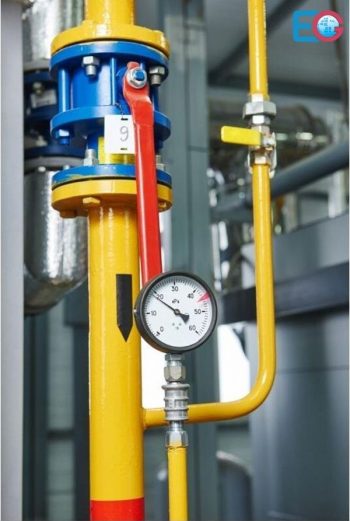
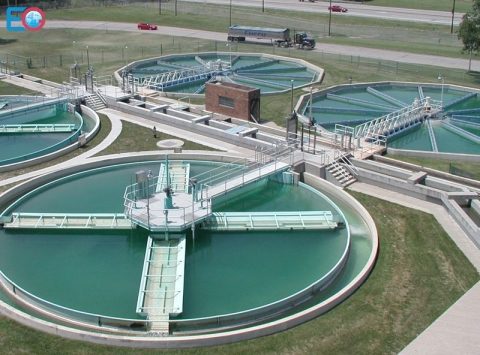
- Slurry:
When used in such an industry, the slurry ball valve finds its use in critical areas such as DRI, autoclave, and slurry transport. Solid in suspended media such as oil refining also uses the same ball valves today. Butterfly and pinch valves may also be used in such an industry depending on different. - Fire safety:
Ball valves are great in fire safety protection too. If force results in a dissipation of the seat mechanism, the ball will automatically create a foolproof design on its own.
- Chlorine manufacturing:
Typically used on dry chlorine, the unique type of ceramic ball valves are used for this purpose. Other types of valves used in this industry are butterfly, globe, and gate valves.
- Paper and pulp:
Usually required for shutting off the flow of media, ball valves are used in pulp mill digesters, liquor fill, batch digester flow, dilution water control, and line mudflow control. - Power plants:
For power stations, ball valves are typically used for draining and venting of media due to the excellent pressure-based sealing of power plants. Metal seated ball valves are the best option for this industry. Apart from ball valves, gate valves, and butterfly valves may also be used in power plants.
- Fertilizer:
Electric ball valves are the most commonly used ball valve in the fertilizer industry owing to their simple processes and easy maintenance. Ball valves are a great option for fertilizer plants apart from the globe, plug, and gate valves.
- Pharmaceutical industry:
Sanitary Ball Valves(stainless steel) are commonly used.
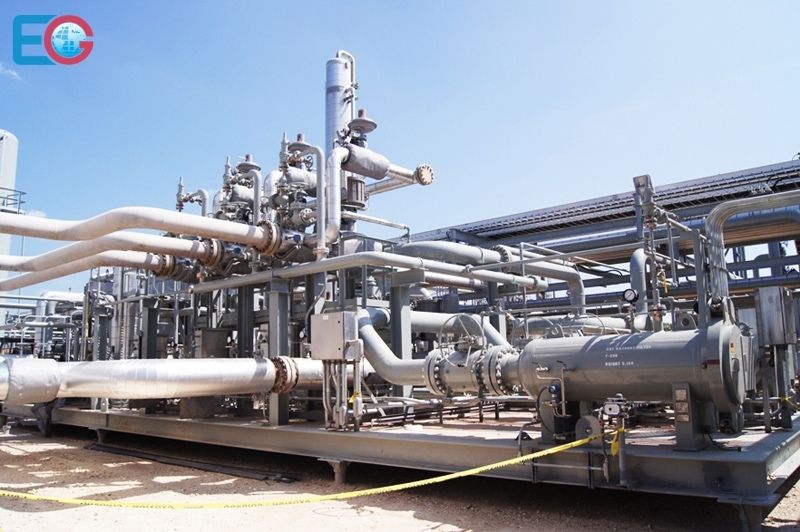
- Mining:
For mining metals like gold, silver, copper, and iron, ball valves help in mineral extraction like nothing else. Alternatives for ball valves in the mining industry include gate valves and butterfly valves. - Miscellaneous:
Ball valves are great for generator skids, turbine skids, polymer plants, separator skids, tank farms, refinery feedstock lines.
7. How to choose the right ball valve?
Wondering what to look for when buying a ball valve? When you’re ready to order a ball valve, it’s important to check several things with the manufacturer before you finalize things.
Here’s the ultimate checklist you need to choose the right ball valve for your project.

Wondering what to look for when buying a ball valve? When you’re ready to order a ball valve, it’s important to check several things with the manufacturer before you finalize things.
Here’s the ultimate checklist you need to choose the right ball valve for your project.
- Size:
You should be considering the piping connections when choosing the size of a ball valve. Starting from DN8, ball valves can be as big as DN1500. You should also check the port size to prevent uneven diameters that might occur during installation.
- Ports:
In definition, ports allow media to pass via the ball You can choose from two-way, three-way, and four-way. Flow is controlled by obstructing ports when in operation.
- Body material:
Depending on where you want to install the ball valve and what medium you want to use it, there are many different materials to choose from. Cast iron, Cast steel, Forged Steel, Stainless Steel, brass, bronze, and plastic are some of the common. - Ball material:
Applications and installation of the valve are also important to determine which ball material is suitable for you. Choose from ball materials such as brass, steel, stainless steel, plastic, and chrome-plating
- Connections:
The port connection determines the fitting style of the ball There are several options such as Threaded (male or female), Flanged, Butt Welded, or Socket Welded to choose from.
EG Valves supply threaded ball valves of BSP, BSPT, NPT, NPTF, UNF, DIN2999, and ISO228, etc.
Meanwhile, we also supply ball valves with various flanges standards of CL150/CL300/CL400/CL600/CL900/CL1500/CL2500 & DIN PN6/PN10/PN16/PN25/PN40/PN64/PN100/PN160/PN250. - Seat / Sealing material:
The material of the seat is also very important for picking the right ball valve from EG Valves. We have listed the most common soft and metal seat materials in the above content of this article.
.Flow rate:
The flow coefficient of a valve is an important indicator to measure the flow capacity of the valve. The larger the flow coefficient (Cv), the smaller the pressure loss when the fluid flows through the valve.- Pressure rating:
Inquire about the maximum pressure for the ball valve as it reflects the max operating limit.
- Application:
Depending on the medium you need ball valves to work such as natural gas, liquid, hydraulic, water, solvent, or food/beverage, Different mediums will need different ball valves.
- Actuation:
Our ball valves’ actuation including Handle, Lever, Worm Gearbox, Hydraulic, Pneumatic Actuator, and Electric Actuator.
- Operation Torque:
As known handle/lever is used for low/medium torque, meanwhile worm gearbox is used for medium torque, and Pneumatic or Electric actuator will be used for high-value torque.
When we talk about the pneumatic or electric actuator, we should make this operation torque more clear:
The torque needed for turning the valve at open and close positions is expressed in kgf m, lb-in, or N-m. For your better understanding, here we provide the unit converter as below:
1 pound inch (1 lb/in) = 0.11298 newton meters (N m)
1 kilogram-force meter (kgf m) = 9.81 newton meters (N m)
Usually, we see the torque data is like this: 14.9 kgf-m/4400rpm. This means that the engine will have a “maximum” torque of 14.9 kgf m at 4400rpm. Generally speaking, the torque output of the engine will be different at different speeds, but based on the above data, it is not that the engine has a torque of 14.9 kgf m at 4400rpm. Although the engine torque output varies with the engine speed, the torque is mainly related to the engine load. So the above data should be interpreted like this: When the engine is at 4400rpm at full load/full speed, there will be a “maximum” torque of 14.9 kgf m
How do you finally make your purchase for customized ball valves from the china ball valve manufacturers? The following stepwise guide will advise you on all you need to know when doing so.
- Sourcing Ball Valve Manufacturer / Supplier:
Nowadays there are many ways to find many ball valve manufacturer in china from the internet. The question will be how to find a suitable manufacturer which can supply ball valves for your detailed requirements.
This is the first stage of sending your inquiry to the manufacturers which you find from Google or other marketplaces.
Essentially, you should send a detailed inquiry asking if they can supply the exact ball valve for your specific project. This stage can also be called the discovery stage, this is where you get more information about the ball valve you need.
If you have a very sufficient budget and require very high-quality ball valves, or you need to use them in some very harsh working conditions, such as nuclear power plants, then you should give priority to the world-renowned large valve brands in Germany or the United States.
But if your budget is limited and you pay more attention to cost performance, you should pay more attention to ball valve manufacturer in China.
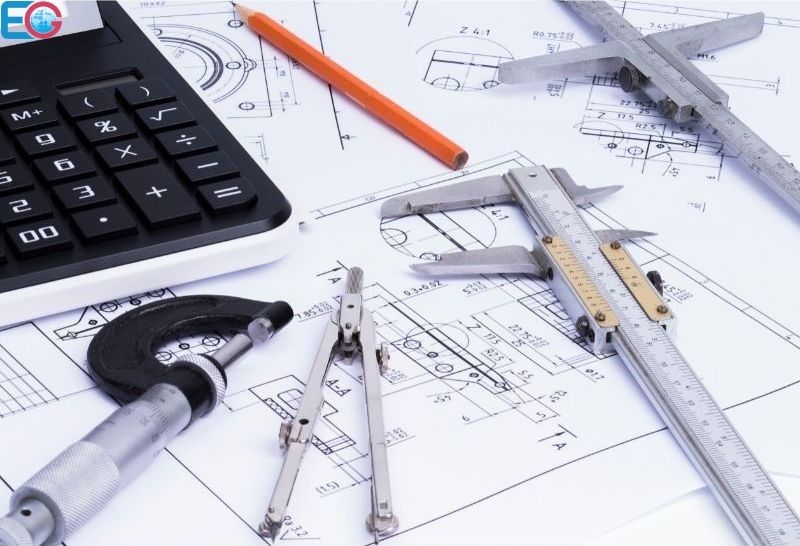
After decades of development, relying on its large domestic market demand and strong supply capacity, China already established a relatively complete valve supply chain system. Since 2017, the total value of China’s valve products exported to the world has exceeded 5.5 billion U.S. dollars each year, and many of them are indeed exported to the United States and Germany manufacturers. (Obviously, they don’t want their end-users to know this point.)
Generally speaking, Chinese valve manufacturers, including us EG valves mainly manufacture valves showing our clients’ brands/logos, this is to say, we mainly do OEM service for overseas clients. We are not just a regular China valve factory, we are a leading valve supplier that brings our brand clients true profit and value.
Specification:
Once you begin a conversation with a sales representative from the valve manufacturers, you can start discussing the specifications you need in the ball valve such as detailed medium, valve sizes and working pressure/temperature, etc.
- Technical Support & Quotation:
This is the stage where the manufacturers will typically provide you with their formal quotations and their technical drawings/datasheets of the ball valve you need. Then you should check carefully if they are what exactly you need.
- Evaluation & PO Placement
At this stage you should evaluate these quotations from several manufacturers. After serious consideration, you can make your finical decision & place the ball valve PO to the valve manufacturer who can give you both the correct technical drawing/solution and the reasonable quotation. - Deposit Payment & Start the Production:
Normally you need to pay a 30% payment in advance as a deposit to the manufacturer & they will start the production for your ball valve PO.
- Inspection & Testing:
Once the production is finished, the testing phase begins where the ball valve is inspected to check if it qualifies for all the things you requested.
- Balance payment & Soonest Delivery:
When the inspection & testing is finished with a good result, then you need to arrange the balance payment & we will prepare the package & delivery it for you as per your requirement. At us EG Valves, we supply shipping options such as FCL, LCL, Air Transport, DHL, UPS, and FedEx as well.
EG Valves conducts necessary investigations, pressure tests, etcetera to ensure you get top-quality valves to ensure their integrity.
Here’s a list of tests we can do on ball valves:
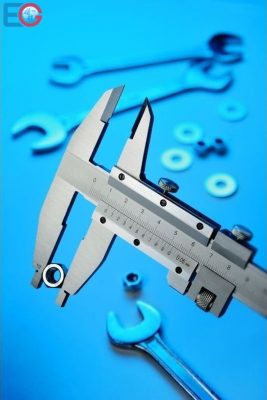
- Raw Materials Inspection
- Visual Investigation Of Castings
- Furnace Infrared Analysis
- Spectrum Analysis
- Chemical Analysis
- Hydraulic Universal Test
- Block And Bleed Pressure Closure Tests
- High-Pressure Pneumatic Tests
- Test Fluid, Pressure, And Duration
- Shell Test
- Low-Pressure And High-Pressure Closure Tests
- Retesting
To get more information regarding our ball valves & service, welcome to contact us EG Valves sales team today.
10. How are EG ball valves packed for shipping?
At EG Valves, our main goal is to make sure different types of valves don’t undergo damages during transit or packaging. We have a routine process of packaging that has worked exceptionally for two decades without any damage to valves.
The next step surrounds the warehouse manager who inspects the ball valve right before packing it for shipping. Before packaging, another special team meticulously assesses the valve size, dimensions, configuration, model, and quantity to ensure it’s exactly as the order placed by you.
How do EG Valves pack the ball valves that you order?
Unless you’ve requested anything special, our typical packaging involves an inner line of polybag and outer packing with plywood cases that are lined with tarred paper and another layer of plywood between any/all layers of ball valves when applicable. This is state-of-the-art packaging because it provides protection from humidity and other environmental conditions in case the valves remain in closed situations for a period of up to three months.
Finally, the plywood packaging is adequately coated with iron tape to nullify any other depreciation during transit. The labeling is completed based on your chosen form of shipping and the order reaches the destination as demanded by you.

11. What are the main international standards of ball valves?
When it comes to ball valves, many things grade the quality you’re getting. The following will advise you all about it. Here are all the standards you should have an idea of when ordering ball valves:

- API 6D:
From design to testing, manufacturing, and even documentation of the ball valve, API 6D is brought forward by the American Petroleum Institute and covers valves for pressure rating that goes up to ASME Class 2500. - ISO 14313:
Exclusive for design, testing, production, and documentation of the ball valve is used for subsea pipeline ball valves. It’s an alternative standard for API 6D. - BS EN 17292:
This is a standard specifying the requirements for ball valves for industries such as natural gas, petrochemical, and petroleum industries. - BS 5351:
A special configuration for ball valves used in industries such as petroleum, natural gas, oil, and petrochemicals, BS 5351 is unique to steel ball valves. Most of it has to do with the body pressure, valve seat, temperature rating, materials, dimension, design, operation, and performance of the valve. - MSS SP 72:
Two types of ball valves are covered under this standard- butt-weld and flanged ball valves for their general servicing. Sometimes it may include reduced and full bore ball valves too. Ball valves with this standard are used in liquid and gaseous industries. It covers ball valves made of cast iron, alloy steel, gray iron, ductile iron, gray iron, copper alloy, and stainless steel.
- API 598:
This standard concerns investigation and testing of ball valves and it’s for general purpose valves including ball valves. Actually, it is the most used standard for ball valve testing. - BS 6755 Part I: This is a test that confirms the ability of the ball valve to contain the pressure of a shell when it’s under pressure. It also tests for the degree of tightness and retention of pressure in addition to the closure settings.
- MSS SP 61:
Created by the Manufacturer’s Standardization Society, MSS SP 61 creates how much leakage is permitted and safe for ball valves. It also advises how to test valves for the same requirement. It may also include the standards for the seat and shell testing of ball valves. - API 6FA:
Referred to as the fire test for valves, API 6FA is a test for valves with closure members. It specifies acceptable leakage and the systematic processes to create the fire test and inspection of core regions of the valve. - API 607:
Another fire test for ball valves made from nonmetallic seats or soft seats. This is a standard that ensures ball valves don’t exceed permitted leakage during a fire outbreak in the vicinity. - BS 6755 Part II:
Another fire testing standard for ball valves used in fluid environments includes this test. It also determines the leakage of the valve under fire. - ASME B16.10:
This is a standard that makes sure all ball valves from different manufacturers adhere to the same face-to-face dimension It ensures that you can interchange ball valves without any hassles.
Get in touch with EG Valves and order your ball valves today!
EG Valves Manufacturing Co., Ltd is a professional valve manufacturing and trading combo supplies various ball valves. Please feel free to contact us today to get ball valves customized to your requirements.
